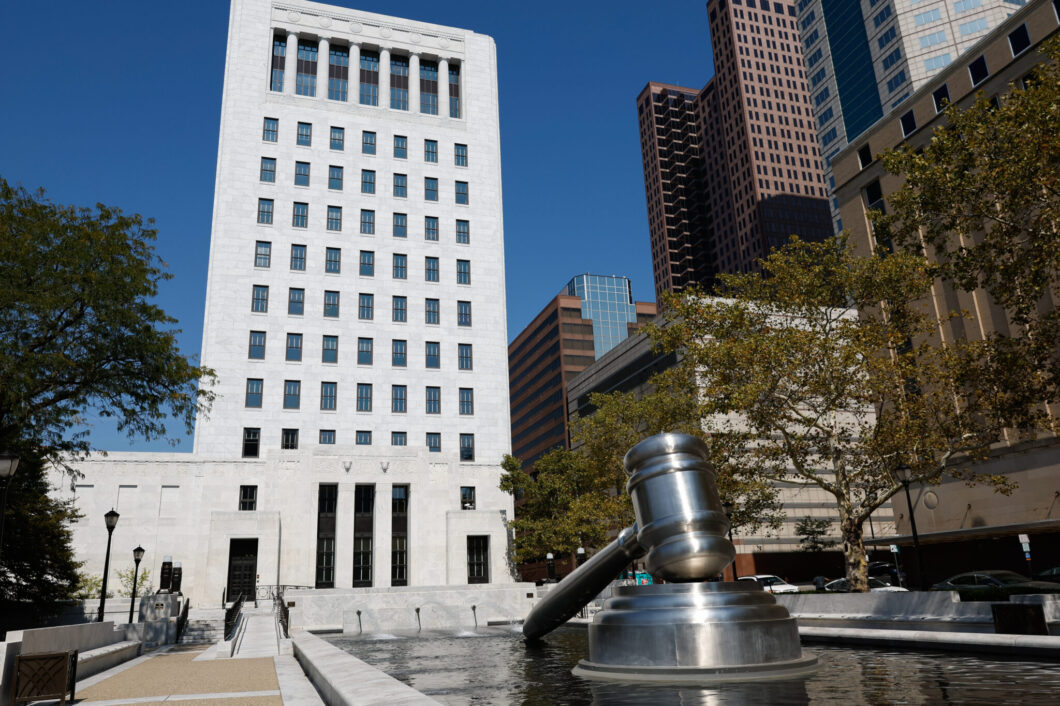COLUMBUS, Ohio — Among state supreme courts, the Ohio Supreme Court ranks somewhere between undistinguished and disreputable. The court is uninterested in judicial scholarship, indifferent to precedent and lustful for partisanship.
Those traits were on parade earlier this month, when majority Republicans, in a 4-3 power play, effectively decreed the Ohio Ballot Board is free to mislead voters and has no obligation to be impartial.
The ruling undermines at least seven decades of legislative and judicial efforts to ensure fairness on ballot questions.
For the first time in Ohio history, the state’s highest court put a stamp of approval on ballot language intentionally written to defeat a statewide issue.
How did we get here?
In 1953, a strongly Republican state legislature passed and Democratic Gov. Frank J. Lausche signed a law to guarantee the fairness of ballot titles.
The law requires the secretary of state and Ohio’s 88 county boards of elections to provide “a true and impartial statement of the measures in such language that the ballot title shall not be likely to create prejudice for or against the measure.”
In 1974, Ohioans overwhelmingly approved a state constitutional amendment designed to provide additional ballot clarity, beyond ballot titles.
The amendment created the five-member ballot board and empowered it to prepare ballot language explaining proposed constitutional amendments.
Previously, after reading the title, voters had to read the entire text or a condensed text of amendment proposals, which often were highly technical, legalistic and confusing.
The Ohio Constitution declares that ballot language cannot be drafted to “mislead, deceive or defraud the voters.”
For a half-century, the ballot board did its work in bipartisan fashion with little controversy. On a few occasions, the Ohio Supreme Court ordered ballot language revisions. But without partisan warfare.
An important precursor of today’s raw judicial partisanship was the legislature’s 2021 decision to put party labels back on the ballot in races for the Supreme Court and the appellate courts.
From 1912 through 2021, Ohio elected judges without party labels. That was the result of the 1911 Nonpartisan Judiciary Act, prompted by a consensus in the early 1900s that the judiciary suffered from too much partisanship.
With its gerrymandered, supermajority control of the General Assembly, Republicans in 2021 saw fit to return explicit partisanship to judicial races.
Legislative leaders did not seek the opinion of the Ohio Judicial Conference, which represents the state’s 723 judges.
Since its creation in 1953, the conference mission has been to improve the administration of justice “and bring honor to the profession.”
The conference opposed the return to party labels, as did the Ohio State Bar Association.
On Aug. 16, the ballot board, by a 3-2 partisan vote, dismissed a half-century of bipartisan efforts toward fair and impartial ballot language.
The board’s Republican majority adopted highly prejudicial language designed to defeat a proposed state constitutional amendment on redistricting reform – State Issue 1.
Everyone on Capitol Square knew the ballot board’s prostitution of its legal responsibility would be appealed to the Ohio Supreme Court.
Sadly, everyone on Capitol Square also knew the court’s four Republican justices were prepared to put party loyalty above their oaths to impartial justice.
That’s exactly what they did.
With their ruling, Chief Justice Sharon Kennedy and Justices Joseph Deters, Pat DeWine and Patrick Fischer debased themselves and did lasting damage to the court’s reputation.
Read the original piece here.

